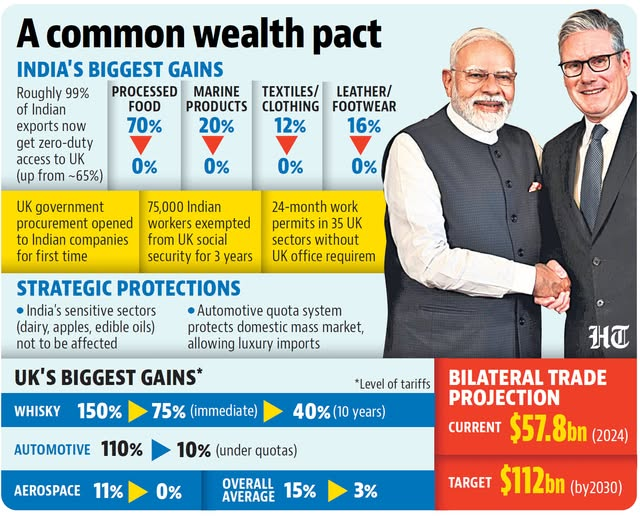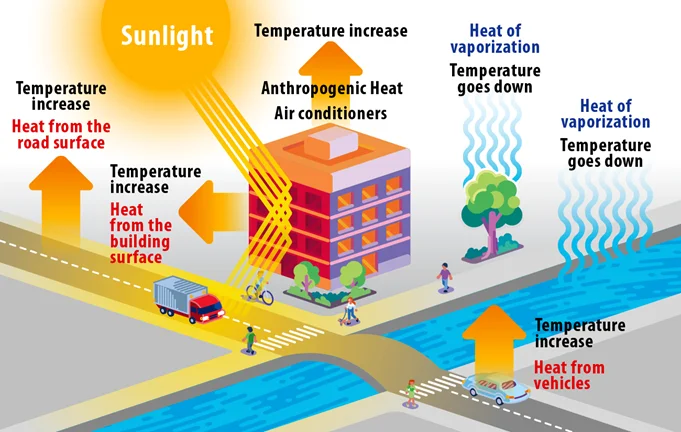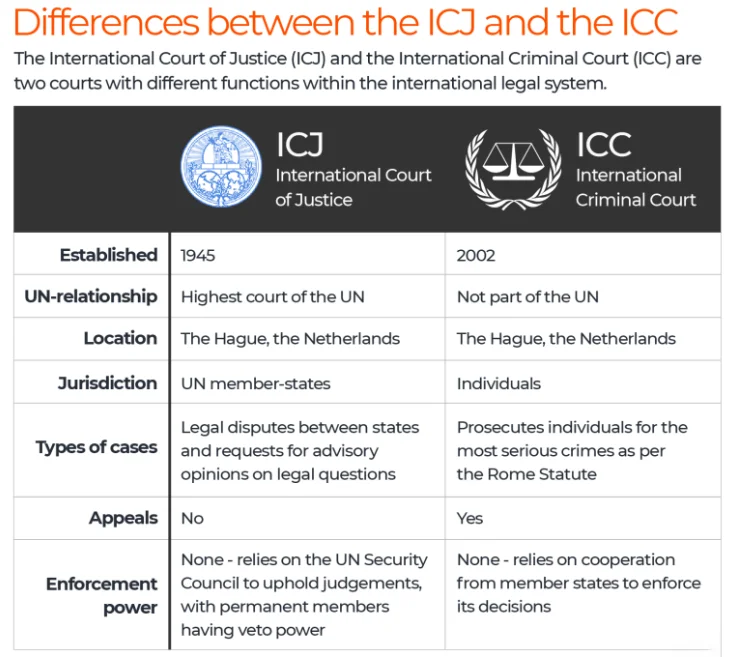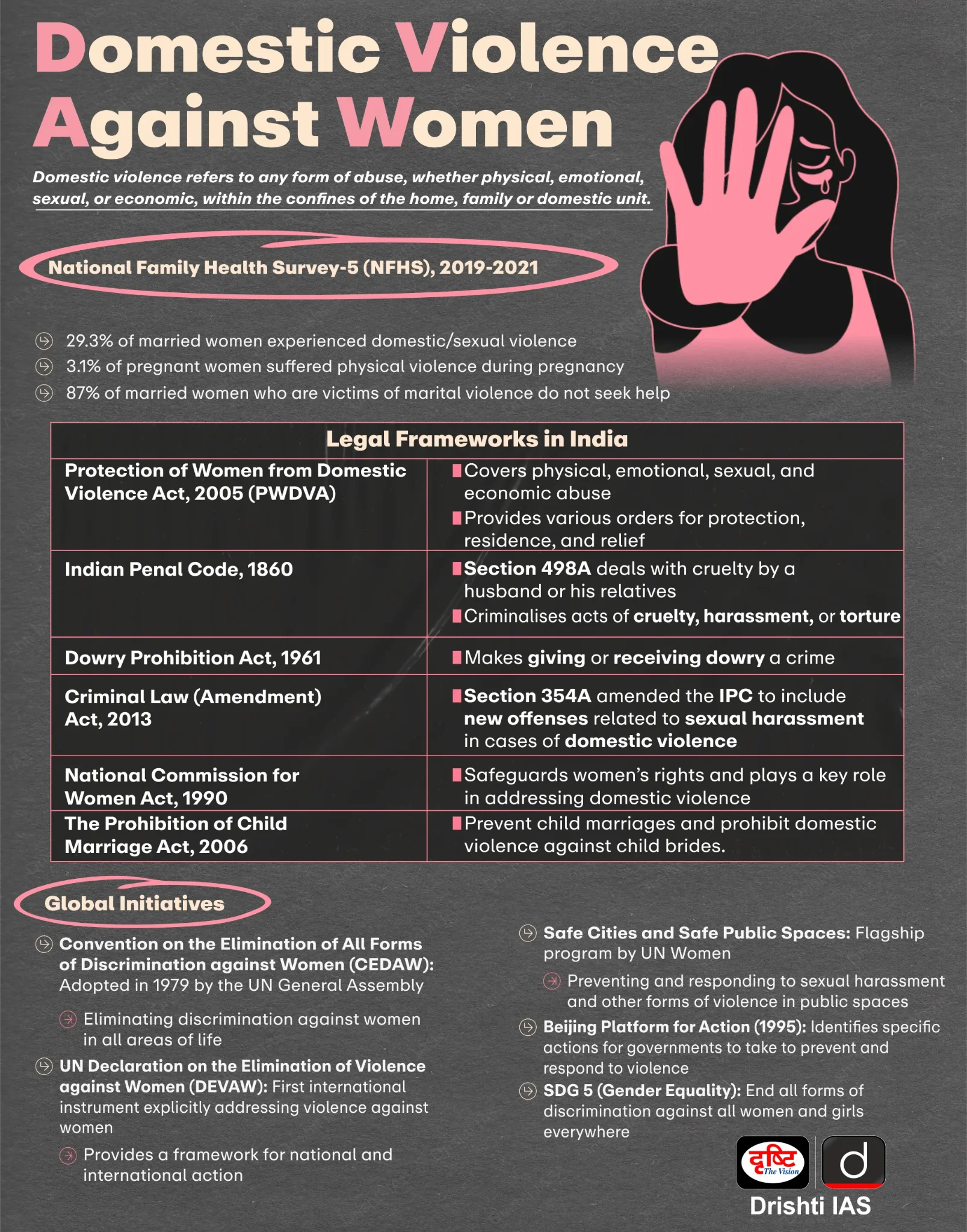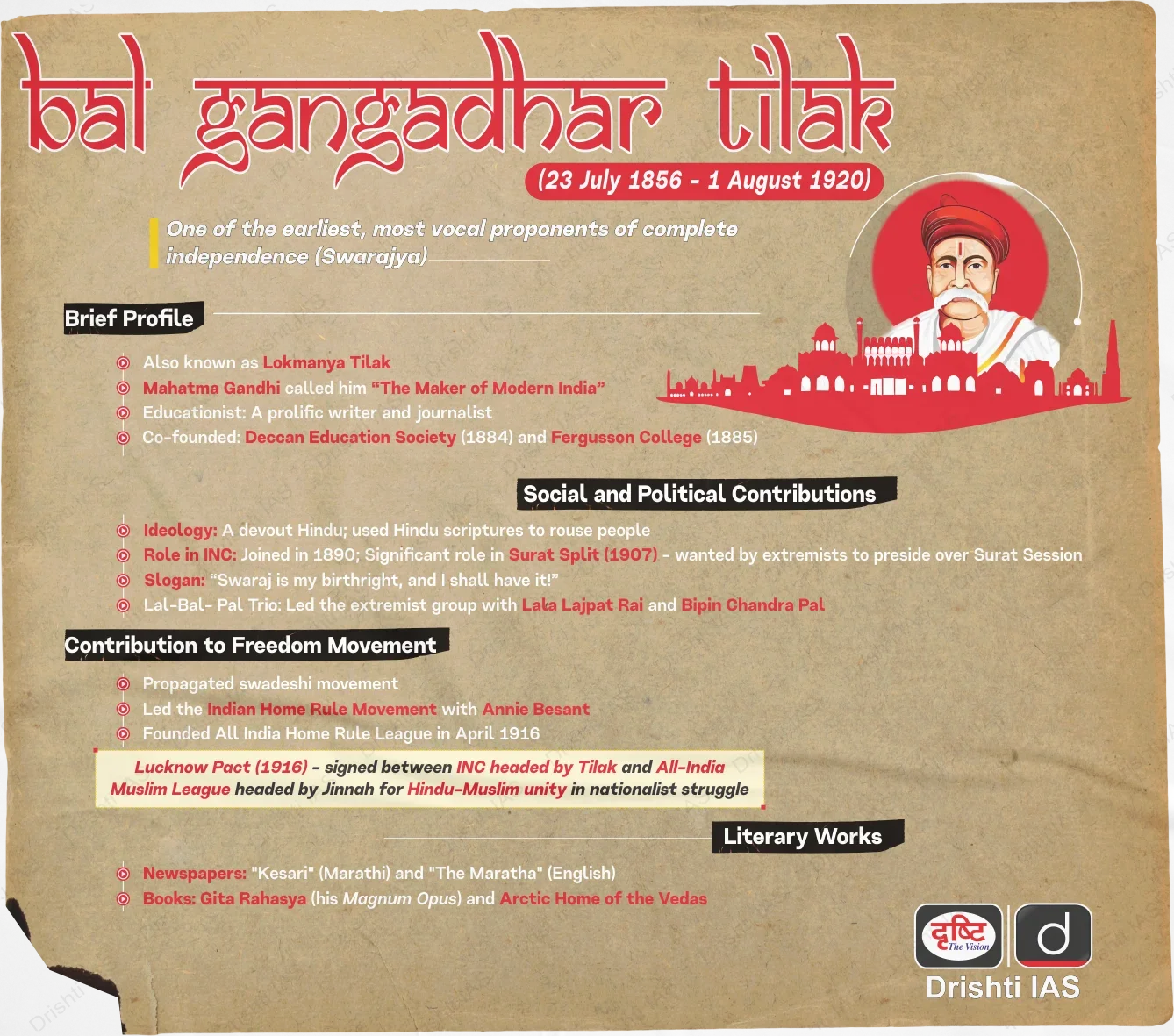International Relations
India-UK Vision 2035 and CETA
For Prelims: Free Trade Agreement, Bilateral Investment Treaty, Artificial Intelligence, International Solar Alliance, "NET Zero" Innovation Virtual Centre
For Mains: India-UK bilateral relations and evolving strategic partnership, Significance of Free Trade Agreements (FTAs)
Why in News?
The Indian Prime Minister's visit to London marked the unveiling of the India–UK Vision 2035 roadmap and the formalisation of the Comprehensive Economic and Trade Agreement (CETA), a Free Trade Agreement (FTA), with the goal of pushing bilateral trade beyond USD 100 billion by 2030.
What are the Key Features of the India-UK Vision 2035?
- Trade and Economic Cooperation: The newly signed CETA is central to the Vision 2035, aiming to increase bilateral trade and create jobs.
- The Joint Economic and Trade Committee (JETCO) will oversee its implementation, with plans to advance a Bilateral Investment Treaty (BIT).
- Technology and Innovation: A major focus is the Technology Security Initiative, targeting advancements in next-generation technologies such as Artificial Intelligence (AI), quantum computing, telecom, and critical minerals.
- Defense:The two countries have agreed on a 10-year defence industrial roadmap, focusing on joint research and manufacturing in areas like jet engine technology, maritime security, and directed energy weapons.
- The UK will also rely on India for logistics in the Indian Ocean Region and work with India under the Indo-Pacific Oceans’ Initiative (IPOI) to set up a Regional Maritime Security Centre of Excellence (RMSCE) to tackle non-traditional maritime security threats.
- Climate and Sustainability: India and the UK will work together to mobilize green finance, collaborate on offshore wind and nuclear technologies, and build joint supply chains in green goods.
- Platforms like the International Solar Alliance and Coalition for Disaster Resilient Infrastructure will facilitate these efforts.
- Education and Skills: The UK will encourage the establishment of university campuses in India, and both countries will focus on Mutual Recognition of Qualifications and climate-linked job creation through a Green Skills Partnership.
- Global Governance: Reinforces commitment to multilateralism and advocating for reforms in institutions like the United Nations, WTO, IMF, and the World Bank.
What are the Key Highlights of the India-UK CETA?
- Key Features:
- Duty-Free Access: India will have 99% duty-free access to the UK market, benefiting labor-intensive sectors such as textiles, leather, marine products, electric and hybrid vehicles and auto components.
- India to cut or eliminate duties on 90% of tariff lines, covering 92% of imports from the UK (includes cars, alcohol).
- India will eliminate tariffs on UK electric vehicles in the sixth year of the agreement, with no duties on EVs priced below GBP 40,000.
- Services Sector: Indian professionals and companies will enjoy expanded market access in IT, financial services, education, and more, with simplified visa processes for sectors like engineering, architecture, and hospitality.
- Double Contribution Convention: Under Double Contribution Convention, India-UK CETA will exempt Indian professionals and their employers from UK social security contributions for three years, improving the competitiveness of Indian talent.
- Inclusive Growth: The agreement will promote participation from women, youth, Micro, Small, and Medium Enterprises (MSME), farmers, and innovators, encouraging access to global value chains and supporting sustainable practices.
- Agricultural Benefits: Indian agricultural products like processed foods, edible oils, and seafood will see tariff reductions, boosting exports to the UK.
- Duty-Free Access: India will have 99% duty-free access to the UK market, benefiting labor-intensive sectors such as textiles, leather, marine products, electric and hybrid vehicles and auto components.
- Impact:
- Trade Expansion: The CETA aims to double bilateral trade by 2030, reaching nearly USD 112 billion in goods and services combined. The agreement is projected to increase UK exports to India by 60% by 2040.
- Job Creation: The agreement will stimulate job creation in both countries by expanding economic activities, especially in sectors like manufacturing, services, and agriculture.
- Increased Investment: The inclusion of provisions that benefit MSMEs, startups, and entrepreneurs will encourage investment flows between India and the UK.
How India-UK Relations Evolved Over Time?
- Trade and Investments: Bilateral trade reached USD 21.34 billion in 2023–24. India’s exports to the UK rose by 12.6% to USD 14.5 billion in 2024–25. Imports from the UK grew by 2.3% to USD 8.6 billion.
- Technology and Innovation: The India–UK Technology Security Initiative (TSI), launched in 2024, focuses on key emerging sectors like AI, semiconductors, and cybersecurity.
- The UK is now India’s second-largest research partner after the US. India-UK "NET Zero" Innovation Virtual Centre will focus on green hydrogen and decarbonisation.
- The UK also named India a partner in its International Science Partnership Fund.
- Defence and Security: India and the UK have strengthened defence ties through joint exercises like Konkan, Cobra Warrior, and Ajeya Warrior, focusing on Indo-Pacific cooperation and defence tech.
- Health: India and the UK collaborated during the Covid-19 pandemic, notably with the AstraZeneca-Serum Institute vaccine partnership. Over 60,000 Indians work in the UK’s National Health Service.
- Indian Diaspora: The UK is home to 1.86 million people of Indian origin, contributing significantly to science, arts, business, and politics.
What are the Key Areas of Friction Between India- UK?
- Extradition Issues: India accuses the UK of sheltering fugitives (e.g., Vijay Mallya). The UK's reluctance on extradition strains legal and diplomatic trust.
- Russia-Ukraine War: India's neutral stance clashes with the UK’s strong support for Ukraine, causing strategic discomfort.
- Climate Tariffs: The UK’s planned Carbon Border Adjustment Mechanism (CBAM) may hurt Indian exports like steel. India sees this as protectionism.
- Khalistani Activities: Pro-Khalistani protests in the UK strain ties. India wants stronger UK action against such groups.
- Intellectual Property Rights: UK’s push for strict IP protection clashes with India’s need for affordable medicines and flexible innovation rules.
What Steps Can India Take to Strengthen India- UK Ties?
- Deepen Security Ties: Leverage forums like AUKUS and expand cooperation on Indo-Pacific, counterterrorism, and cyber defense.
- Joint Climate Action: Collaborate on clean energy, sustainable agriculture, and green innovation through shared research platforms.
- Trade & Investment Diplomacy: Expand market access to push investment and promote India as a Global Capability Centre (GCC) hub.
- Leverage the Indian Diaspora: Engage the 1.86 million-strong Indian community in the UK for political, cultural, and economic outreach.
Conclusion
- The India-UK Vision 2035 and CETA deepen strategic, economic, and technological ties, offering opportunities in trade, innovation, defence, and climate. Careful handling of policy differences and focused diplomacy will help build a stronger, future-ready partnership.
|
Drishti Mains Question: Examine the strategic significance of the India–UK Vision 2035 and how it redefines bilateral relations in a post-Brexit world. |
UPSC Civil Services Examination Previous Year Question
Prelims:
Q1. We adopted parliamentary democracy based on the British model, but how does our model differ from that model? (2021)
- As regards legislation, the British Parliament is supreme or sovereign but in India, the power of the Parliament to legislate is limited.
- In India, matters related to the constitutionality of Amendment of an Act of the Parliament are referred to the Constitution Bench by the Supreme Court.
Select the correct answer using the code given below.
(a) 1 only
(b) 2 only
(c) Both 1 and 2
(d) Neither 1 nor 2
Ans: (c)
Q2. The term ‘Regional Comprehensive Economic Partnership’ often appears in the news in the context of the affairs of a group of countries known as(2016)
(a) G20
(b) ASEAN
(c) SCO
(d) SAARC
Ans: (b)
Mains
Q1. The judicial systems in India and the UK seem to be converging as well as diverging in recent times. Highlight the key points of convergence and divergence between the two nations in terms of their judicial practices. (2020)


Biodiversity & Environment
Towards Resilient and Prosperous Cities in India
For Prelims: World Bank, 74th Constitutional Amendment Act 1992 , Goods and Services Tax, Smart Cities Mission
For Mains: Urban climate risks and resilience strategies in India, Challenges of urban planning and sustainable development in India
Why in News?
A World Bank report, in collaboration with the Union Ministry of Housing and Urban Affairs, titled "Towards Resilient and Prosperous Cities in India", forecasts that by 2030, Indian cities will generate 70% of new employment but will face risks from flooding and extreme heat, urging the need for greater autonomy and climate-resilient planning.
What are the Key Climate Risks Impacting Indian Cities?
- Urban Growth: Urban population projected to nearly double to 951 million by 2050. By 2030, 70% of all new jobs will be generated in cities, but rapid urbanisation increases vulnerability to climate shocks.
- Indian cities will require USD 2.4 trillion by 2050 to build climate-resilient infrastructure and services.
- Flooding: Urban sprawl into flood-prone areas and increased concrete construction are worsening pluvial flooding by limiting rainwater absorption.
- The World Bank report projects that annual losses due to flooding could reach USD 5 billion by 2030. If adequate adaptation measures are not implemented, these losses are expected to surge to USD 30 billion by 2070.
- Just 10–20% road flooding can disrupt over 50% of a city’s transport system.
- Extreme Heat: The World Bank report highlights the growing intensity of the urban heat island effect in Indian cities, where concrete and asphalt absorb heat during the day and release it at night, leading to elevated nighttime temperatures.
- This is expected to lead to 3 lakh heat-related deaths annually by 2050. Solutions like urban greening, and cool roofs could prevent over 1.3 lakh deaths each year, underscoring the need for climate adaptation in urban planning.
- Air Pollution: In 2023, India was home to 42 of the 50 most polluted cities in the world, up from 39 in 2022. The primary contributors to poor air quality include vehicular emissions, construction dust, and biomass burning.
- Poor air quality leads to respiratory diseases, affecting millions of urban residents, especially in cities like Delhi, Mumbai, and Bengaluru.
What are the Challenges of Urban Autonomy in Enhancing Climate Resilience?
- Weak Devolution to ULBs: The Urban Local Bodies (ULBs), serve as local self-governments in India, as established by the 74th Constitutional Amendment Act of 1992.
- This Act empowered the states to devolve the responsibility of functions including urban planning, regulation of land use, water supply, and slum upgradation to ULBs, but many states haven't fully implemented it.
- Limited Financial Resources: ULBs often lack the necessary funds to implement climate-resilient infrastructure and policies, hindering their ability to address climate risks effectively.
- Most cities struggle to raise revenue, property tax collection is under 0.2% of GDP compared to 1.1% in Organisation for Economic Co-operation and Development (OECD) countries.
- India’s devolution of funds to ULBs is significantly lower than in countries like South Africa (2.6%), Mexico (1.6%), the Philippines (2.5%), and Brazil (5.1%).
- This limited funding reduces urban productivity and quality of life. The rollout of Goods and Services Tax (GST) further shrank ULBs’ revenue sources, weakening their financial autonomy.
- Weak Institutional Capacity: Many ULBs lack the technical expertise and administrative capacity to plan and execute climate adaptation strategies.
- Data Deficiency: ULBs often lack access to accurate, up-to-date data on climate risks and urban infrastructure, which is essential for informed decision-making.
- Fragmented Governance: Lack of coordination among different urban authorities hampers the integration of climate resilience strategies across various sectors.
What are the Key Strategies for Ensuring Climate Resilience in Indian Cities?
- Greater Autonomy for Cities: The World Bank highlights that cities with more autonomy perform better in resource mobilization, climate resilience, and accountability.
- Decentralized governance helps them tackle local challenges and boost revenue, especially for climate adaptation.
- Strengthening municipal revenue has been a consistent priority across Finance Commissions (FC). The 12th FC pushed for a Geographical Information System (GIS) and digitisation to improve property tax collection, while the 14th FC recommended empowering municipalities to levy vacant land tax.
- Urban Planning and Design: Green infrastructure like parks, wetlands, and open spaces helps manage rainwater and reduce urban heat. Schemes like AMRUT 2.0 (Atal Mission for Rejuvenation and Urban Transformation) support this through green space and water-focused projects.
- Cities also need climate-resilient urban planning by avoiding construction in floodplains and enforcing climate-aware zoning norms.
- Upgrade stormwater drainage by recycling and reusing water for industrial use, and implement the Climate Smart Cities Assessment Framework under the Smart Cities Mission for efficient planning.
- Risk Evaluation and Adaptation Measures: Cities should conduct detailed climate risk assessments and incorporate adaptation measures (like Ahmedabad Heat Action Plan model) into city development plans.
- Use geospatial data, climate models, and early warning systems to support real-time risk management and community preparedness.
- Energy-Efficient and Resilient Buildings: Under the National Mission for Sustainable Habitat (NMSH), promote climate change mitigation and adaptation in the built environment of Indian cities, focusing on areas like sustainable buildings, efficient waste management, and low-carbon urban transport systems.
- The India Cooling Action Plan projects an eightfold rise in cooling demand by 2037. Energy-efficient buildings can cut emissions, improve comfort, and enhance indoor air quality.
- Enhance Investment: Public-private partnership (PPP) plays a vital role in financing climate resilience projects. Encouraging private investment in climate-adapted infrastructure can help cities leverage additional funding and technological expertise.
|
Drishti Mains Question: Indian cities are at the frontline of climate change. Discuss the key risks and evaluate India’s approach to building urban climate resilience. |
UPSC Civil Services Examination Previous Year’s Question (PYQs)
Mains
Q. The frequency of urban floods due to high intensity rainfall is increasing over the years. Discussing the reasons for urban floods, highlight the mechanisms for preparedness to reduce the risk during such events. (2016)
Q. Do government schemes for up-lifting vulnerable and backward communities by protecting required social resources for them, lead to their exclusion in establishing businesses in urban economies? (2014)


Facts for UPSC Mains
ICJ’s Advisory on State Duties for Climate Action
Why in News?
The International Court of Justice (ICJ) issued a landmark advisory opinion stating that countries can be held legally responsible for their role in driving climate change.
- Earlier in 2021, Vanuatu sought an ICJ advisory opinion on climate change, which gained backing from other UN member states in March 2023.
What is the ICJ’s Stance on State Obligations on Climate Change?
- Climate Action is a Legal Duty: States are obligated under international law to reduce greenhouse gas emissions and adapt to climate change.
- Obligations come not just from the UN Framework Convention on Climate Change (UNFCCC) and the 2015 Paris Agreement (limit global warming to 1.5°C above pre-industrial levels) but also from other environmental treaties like the Montreal Protocol, Convention on Biological Diversity, UN Convention to Combat Desertification and Law of the Seas.
- Obligations are not just for the present but also for protecting the rights and environment of future generations.
- Failure is a Wrongful Act: The ICJ affirmed that all countries, regardless of size or development, have climate obligations.
- Failure to act is an “internationally wrongful act” and may lead to liability, including halting harmful actions, preventing repeats, and compensating affected nations.
- This bolsters global calls for climate reparations and “loss and damage” funding.
- Role of Developed Countries: Developed nations (especially those listed in Annex I of the UNFCCC) must take the lead in reducing emissions and supporting others.
- ICJ noted that protecting the climate is part of fulfilling international human rights obligations.
- Significance: The ICJ opinion, though not legally binding, is expected to have huge influence at the 30th session of the Conference of the Parties (COP 30) in Brazil and influence future climate lawsuits.
- It boosts the push for stronger climate action, especially from historically high-emitting countries, and marks a key moment in climate justice by supporting legal accountability.
What is the International Court of Justice (ICJ)?
- About: The ICJ, established in 1945 and active since 1946, is the UN’s principal judicial body.
- It settles legal disputes between states and provides advisory opinions on international law.
- Based in The Hague, Netherlands it's the only UN organ outside New York. Its official languages are English and French.
- The ICJ settles disputes only between states and gives legal opinions, not criminal verdicts.
- Its judgments are final and binding, with no appeal. Under Article 94 of the UN Charter, UN members must comply. Advisory opinions are non-binding.
- Historical Background: The ICJ evolved from global efforts for peaceful dispute resolution, starting with the 1899 Hague Peace Conference, which created the Permanent Court of Arbitration, followed by the Permanent Court of International Justice (PCIJ) under League of Nations (1922). After World War II, the ICJ replaced the PCIJ.
- Composition: The court has 15 judges elected for nine-year terms by the UN General Assembly and Security Council.
- Significance: It promotes peaceful conflict resolution, upholds international law, clarifies global legal norms (e.g. climate change, self-determination), supports human rights, and strengthens multilateral cooperation.
- India’s Engagement With ICJ:
- Right of Passage over Indian Territory (Portugal v. India, 1960): Portugal was granted the right of passage for civilians but India could block military or political access, affirming its sovereignty..
- Kulbhushan Jadhav Case (India v. Pakistan, 2019): ICJ ruled Pakistan violated the Vienna Convention by denying India consular access and ordered review of its sentence.
Note: The ICJ is separate from the International Criminal Court (ICC), which deals with criminal cases against individuals.
|
Drishti Mains Question: Discuss the mandate of the International Court of Justice (ICJ) and its role in climate governance? |
UPSC Civil Services Examination, Previous Year Questions (PYQs)
Prelims
Q. “Rule of Law Index” is released by which of the following? ( 2018)
A. Amnesty International
B. International Court of Justice
C. The Office of the UN Commissioner for Human Rights
D. World Justice Project
Ans: (D)
Mains
Q. Clean energy is the order of the day. Describe briefly India’s changing policy towards climate change in various international fora in the context of geopolitics. (2022)


Facts for UPSC Mains
One Stop Centres Scheme
Why in News?
The Delhi High Court issued multiple directions to the Delhi government concerning the poor condition of One Stop Centres (OSCs) set up under the One Stop Centre scheme to aid women affected by violence.
What is One Stop Centres Scheme?
- About: Launched by the Ministry of Women and Child Development (MWCD), OSCs aim to provide integrated support and assistance to women affected by violence in private and public spaces, including family, community, and workplace settings.
- Also known as Sakhi Centres, they form a key component of the Sambal vertical under Mission Shakti.
- It is 100% centrally funded through the Nirbhaya Fund and implemented by State/UT governments.
- Objectives: They ensure immediate and long-term access to medical, legal, psychological, and counselling services for women facing physical, sexual, emotional, psychological, or economic abuse.
- Target Beneficiaries: It supports all women and girls, including those below 18 years, affected by any form of violence, regardless of caste, class, religion, region, marital status, education, sexual orientation, or culture.
- It is linked to the Juvenile Justice Act, 2015 and POCSO Act, 2012 to ensure protection for minor girls.
- Services Offered:
- Emergency response & rescue (including police assistance)
- Medical aid (first aid, treatment, referral services) and Legal aid & counselling (FIR filing, legal advice via NALSA)
- Psycho-social counselling (mental health support) and Temporary shelter (short-stay facilities)
- Video conferencing (for remote legal/medical consultations)
- Coverage: At least one OSC per district is encouraged, with additional centres in high-crime, large, or aspirational districts.
- Financial and Audit Mechanism: Funds are disbursed as per Public Financial Management System (PFMS) via Single Nodal Agency (SNA) or SNA SPARSH.
- Auditing is done as per Comptroller & Auditor General (CAG) norms, along with social audits by civil society groups.
What was the Need of OSC Guidelines?
- Staffing Shortages: Many OSCs, especially in hospitals, lack dedicated staff and are run by existing hospital personnel, with counsellors called in from external agencies when needed.
- Non-Compliance with SoPs: The SoPs for OSCs (in case of Delhi) mandate specific staffing-5 counsellors, 5 senior resident doctors, 5 staff nurses, and 5 nursing orderlies-but audits found these norms were not consistently followed.
- Inadequate Record-Keeping: Crucial records like child death case reviews and ante-natal care (ANC) are not properly maintained, hindering effective monitoring and service improvement.
What Directions Did the Delhi High Court Issue?
- Awareness Campaign: The government must publicize OSCs through newspapers and signboards at prominent locations like schools, hospitals, bus stops with helpline numbers.
- Infrastructure Strengthening: The court directed the government to ensure adequate infrastructure and immediate staff recruitment to make all OSCs fully functional.
- SOP Implementation: The court mandated the circulation of Standard Operating Procedures (SOPs) on child pregnancy and child marriage among all stakeholders, especially police and OSC staff.
- Appointment of Nodal Officer: The Delhi government was directed to appoint a Nodal Officer to oversee implementation and monitoring.
Note: The above issues were previously highlighted in the Report of the Comptroller and Auditor General of India on Public Health Infrastructure and Management of Health Services for the Government of NCT of Delhi.
|
Drishti Mains Question: Discuss the role of One Stop Centres (OSCs) in addressing gender-based violence in India. |
UPSC Civil Services Examination, Previous Year Question (PYQ)
Q. Is the National Commission for Women able to strategize and tackle the problems that women face at both public and private spheres? Give reasons in support of your answer. (2017)


Rapid Fire
DHRUVA Policy
The Department of Posts has introduced DHRUVA (Digital Hub for Reference and Unique Virtual Address) Policy, a geo-coded digital address system to revolutionize governance, logistics, and service delivery in India.
DHRUVA Policy
- About: It is a pioneering Digital Public Infrastructure (DPI) initiative designed to revolutionize the structure and management of addresses across India by assigning a unique digital address to every home.
- Based on Address-as-a-Service (AaaS), it enables secure, consent-based sharing of geo-coded address information through a seamless digital platform.
- It has been developed entirely in India, fostering indigenous technology and domestic innovation.
- Objective: It can reduce delivery costs in e-commerce, postal, and logistics, and enhances resource planning in telecom, broadband, and urban governance.
- Layers: It consists of 2 key layers:
- Digital Postal Index Number (DIGIPIN): DIGIPIN is a 10-digit alphanumeric code that represents exact geographic coordinates (latitude-longitude), created using 4x4 meter grids across India.
- It gives every location a unique identity using geospatial data.
- Digital Address Layer: A user-friendly, consent-based system built on DIGIPIN, letting users create custom labels and descriptive addresses (e.g., house numbers, street names etc) linked to their DIGIPIN.
- Digital Postal Index Number (DIGIPIN): DIGIPIN is a 10-digit alphanumeric code that represents exact geographic coordinates (latitude-longitude), created using 4x4 meter grids across India.
| Read More: Post Office Act 2023 |


Rapid Fire
Birth Anniversary of Bal Gangadhar Tilak
The birth anniversary of Lokmanya Bal Gangadhar Tilak was observed on 23rd July 2025.
Bal Gangadhar Tilak
- About: Born on 23rd July 1856 in Ratnagiri, Maharashtra, Bal Gangadhar Tilak is revered as the Father of Indian Unrest.
- He was among the earliest and strongest advocates of complete independence (Swarajya).
- Tilak, along with Lala Lajpat Rai and Bipin Chandra Pal, formed the iconic Lal-Bal-Pal trio known for their extremist nationalist ideology.
- Surat Split (1907): The Surat Split of 1907 in the Indian National Congress (INC) marked a division between the Extremist and Moderate factions.
- The Extremists, mainly from the Bombay Presidency, backed Tilak or Lajpat Rai for the presidential post, but the split occurred after Rasbehari Ghose was elected as president.
- Contribution in Education: In 1884, Tilak, along with Gopal Ganesh Agarkar and others, co-founded the Deccan Education Society, which later led to the establishment of Fergusson College in Pune in 1885.
- Newspapers: Kesari (Marathi) and Mahratta (English)
- Books: Gita Rahasya, The Orion, and Arctic Home of the Vedas
| Read More: Bal Gangadhar Tilak |


Rapid Fire
Interstellar Comet 3I/ATLAS
The NASA-funded ATLAS telescope in Chile reported the discovery of interstellar comet 3I/ATLAS, originating from the constellation Sagittarius.
3I/ATLAS Comet
- Discovery & Trajectory: It is the third confirmed interstellar object (denoted by 3I) after 1I/ʻOumuamua(2017) and 2I/Borisov (2019).
- It travels at a speed of 57–68 km/s in a hyperbolic orbit, confirming its interstellar origin.
- Origin and Age: Likely originated from the Milky Way’s thick disk, a region of ancient stars, making it distinct from previous interstellar objects.
- Simulations using the Ōtautahi–Oxford model suggest a 70% probability that it predates the Solar System by over 3 billion years, making it possibly the oldest comet ever observed, at over 7 billion years old.
- Physical & Chemical Properties: Shows active coma and likely tail, with spectral evidence of water ice and complex organics.
- Its estimated nucleus size is 10–30 km, larger than earlier interstellar comets.
- Significance: 3I/ATLAS is the first ISO traced to the Milky Way’s thick disk, unlike earlier ISOs from the thin disk.
- It offers rare insight into primordial galactic material, aiding study of planet formation, organic chemistry, and possibly panspermia.
| Read More: 2I/Borisov: An Interstellar Object |



